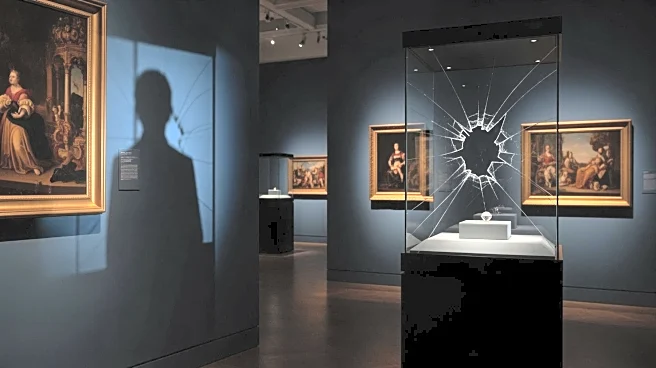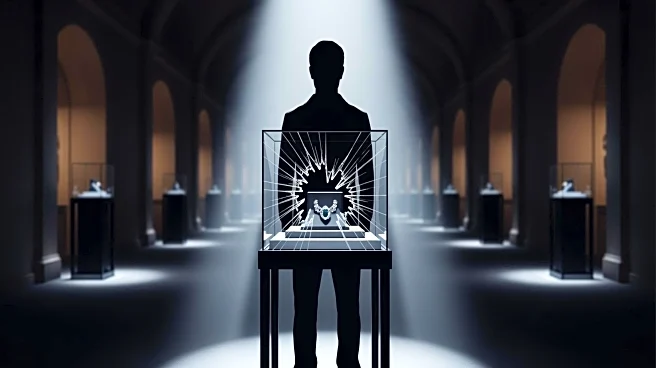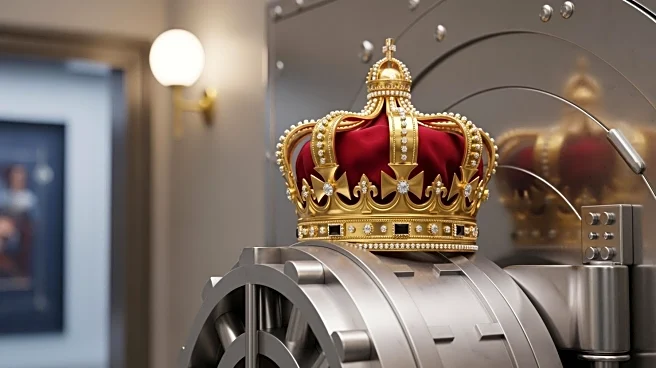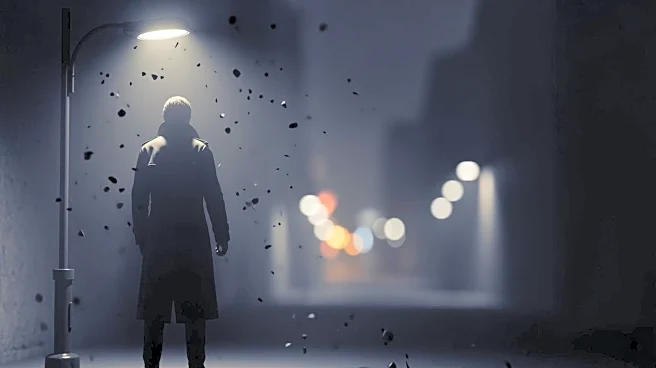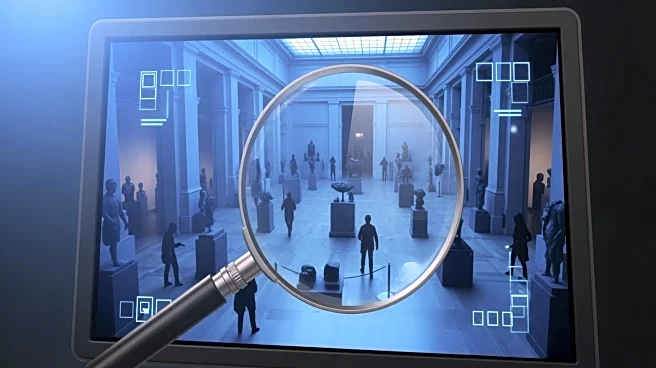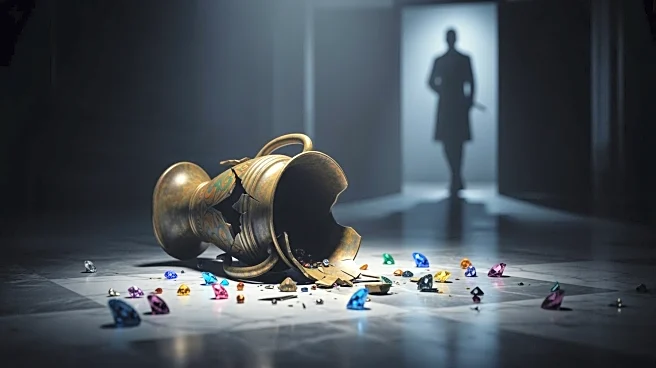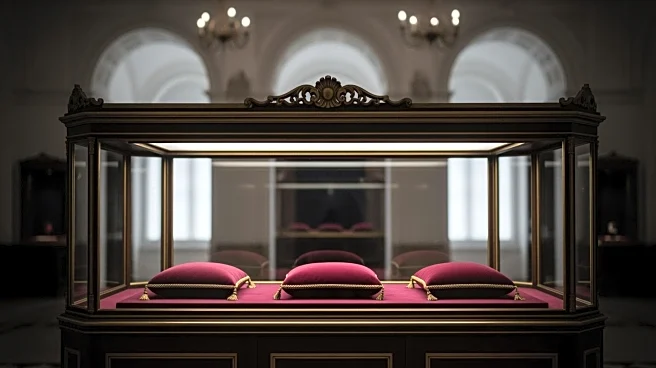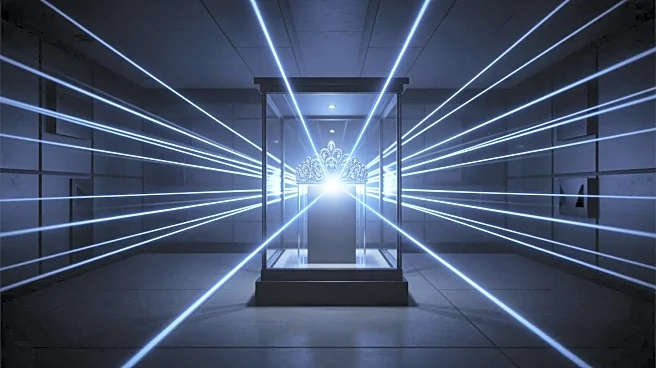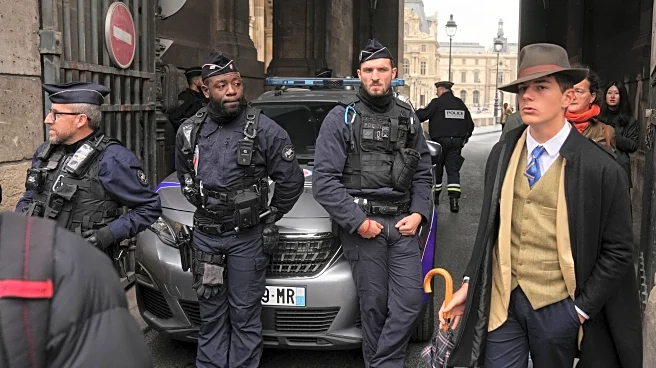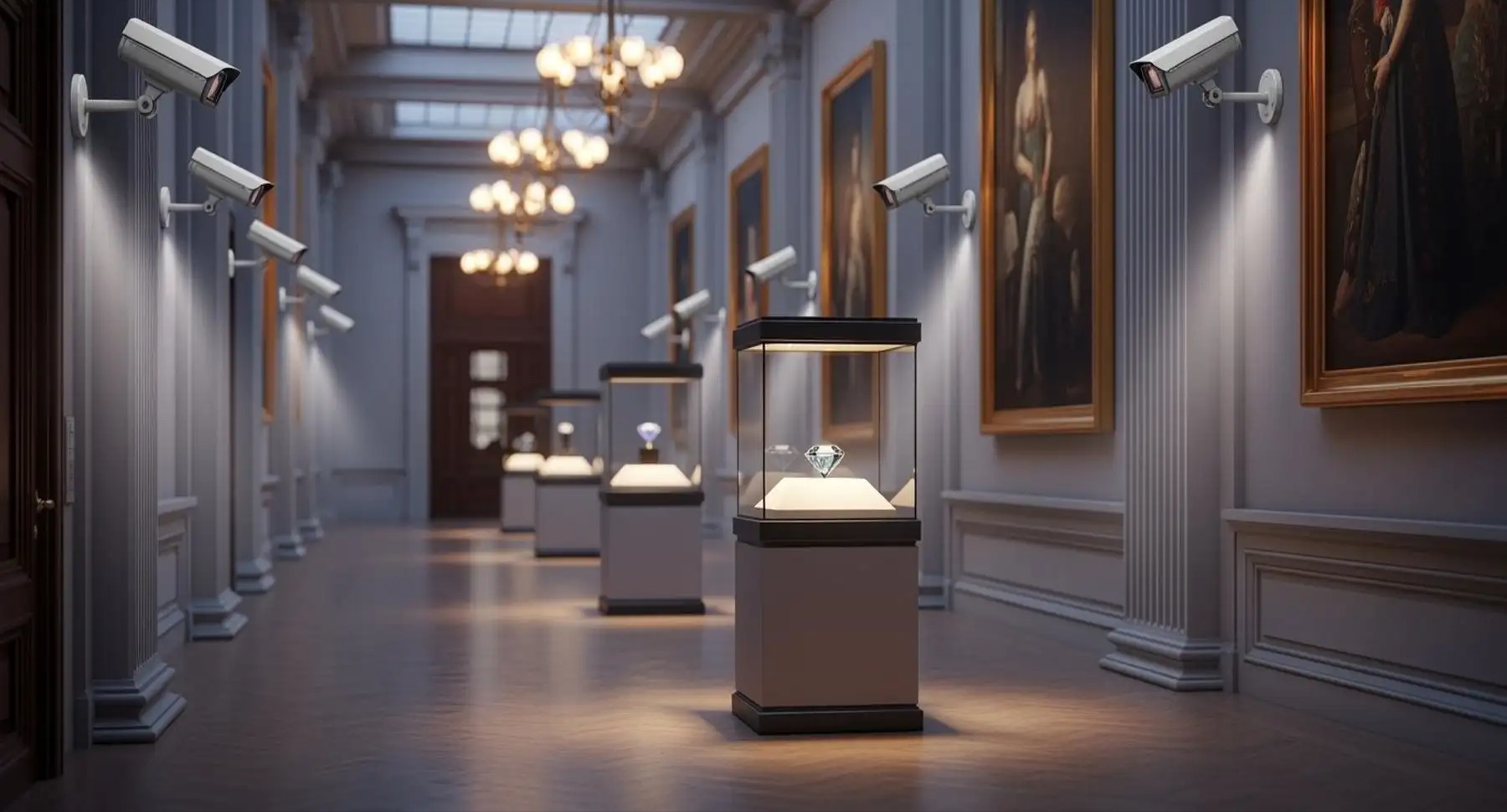What's Happening?
A recent photograph taken outside the Louvre in Paris has captured public attention due to the presence of a mysterious man during the investigation of a jewel heist. The man, dressed in a three-piece
suit with a gold vest and fedora, was seen among police officers, sparking comparisons to fictional detectives like Inspector Clouseau and Hercule Poirot. Social media users speculated about his role, with some suggesting he might be a detective or even involved in the heist. However, the photographer, Thibault Camus, clarified that the man was merely a passerby who added a touch of intrigue to the scene. The heist involved four masked criminals who stole several priceless pieces from the Louvre's crown jewels collection and fled on scooters. The thieves remain at large, and the Paris prosecutor's office has chosen to keep the identity of the mysterious man undisclosed.
Why It's Important?
The Louvre jewel heist is significant due to the high-profile nature of the crime and the value of the stolen items. The incident highlights security challenges faced by major cultural institutions and raises questions about the effectiveness of current protective measures. The public's fascination with the mysterious figure underscores the cultural impact of such events, blending real-world crime with elements of fiction and intrigue. The ongoing investigation and the public's engagement could influence future security protocols at museums and other high-value targets. Additionally, the heist may prompt discussions on international cooperation in art crime investigations, as stolen artifacts often cross borders.
What's Next?
As the investigation continues, authorities are likely to enhance security measures at the Louvre and similar institutions to prevent future incidents. The public's interest in the case may lead to increased media coverage, potentially aiding in the identification and capture of the perpetrators. Law enforcement agencies may also collaborate internationally to track the stolen jewels, which could surface in the black market. The mysterious man's identity might remain undisclosed, maintaining public intrigue and speculation. The outcome of the investigation could set precedents for handling high-profile art thefts and influence policy decisions regarding cultural heritage protection.
Beyond the Headlines
The incident at the Louvre highlights broader issues of cultural heritage protection and the challenges of securing valuable artifacts in public spaces. It raises ethical questions about the balance between accessibility and security in museums. The public's fascination with the mysterious figure reflects a cultural tendency to romanticize crime and detective work, which can impact perceptions of law enforcement and criminal justice. The heist also underscores the global nature of art crime, necessitating international cooperation and legal frameworks to effectively address such issues.
